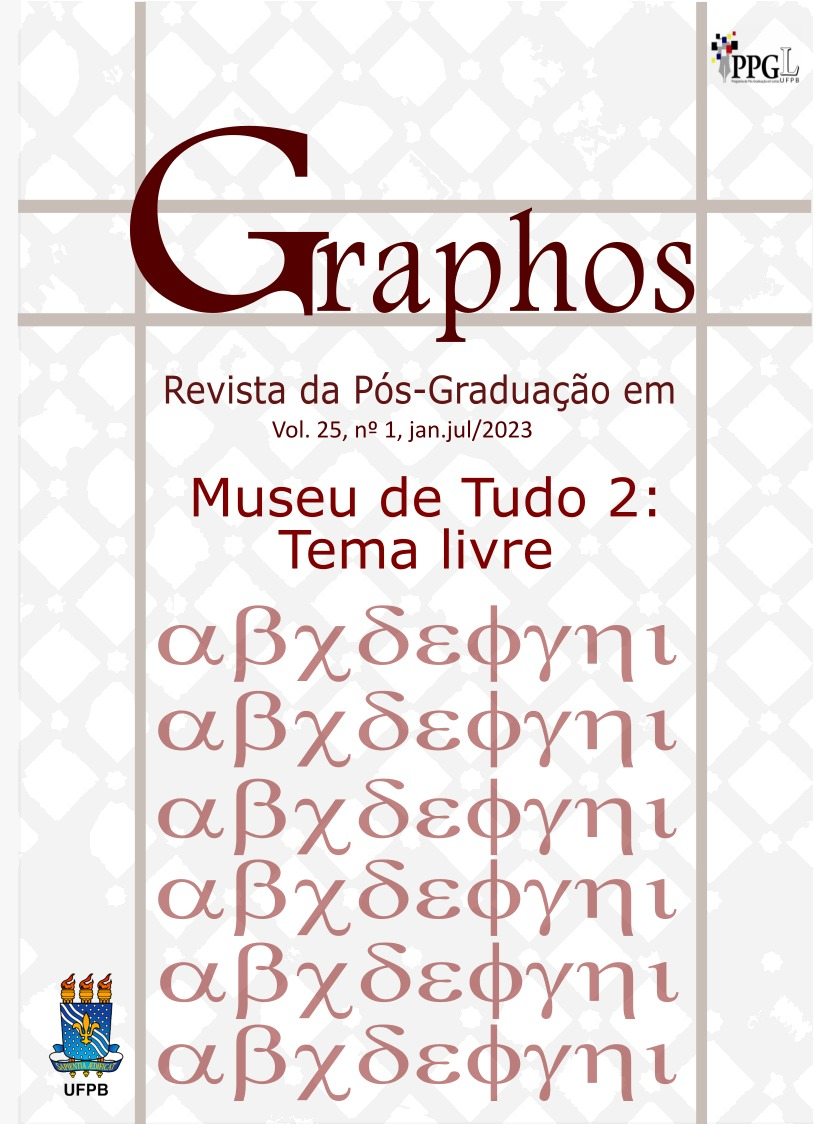SUASSUNA’S COMPADECIDA: HUMAN, DIVINE AND EMPOWERED(?)
DOI:
https://doi.org/10.5281/zenodo.10592484Keywords:
Compadecida, Ariano Suassuna, feminino, empoderamento, religiosidadeAbstract
The position of women in the western world is one of the most discussed subjects to this day, especially when this aspect is observed through the prism of religion, especially Christianity. Literature, as a reflection of society, ends up portraying in its characters the various roles acquired, or imposed, on the female gender. In Brazil, among a multitude of works that revolve around this theme, we highlight Auto da Compadecida (1955), by Ariano Suassuna (1927 – 2014). In it, the author uses popular faith to assemble a northeastern self in which the sacred and profane feminine intersect and allow us to observe how each one represents different characteristics associated with this gender. In this article, our objective is to analyze one of the central figures of this work, Compadecida, in order to explore her relationship with the other characters, especially when it comes to how the feminine is characterized in the religious sphere. Based on the theories of Barros (1998), Campbell (1990), Jurkevics (2004), Parker (1996), Tavares (2012), Trevisan (2017), we will analyze the relationship of Maria, Compadecida, with the popular faith, examining how this female figure reached a position of such prominence and power in the religiosity of the people. However, it is possible to infer that, in the Christian universe represented by this piece, even if the feminine, at least in its sacred form, has received such a position within the religious universe, it is still relegated to a position of subalternity, and its empowerment depends directly on the male/patriarchal control that commands the Catholic faith.
Downloads
References
A12. História de Nossa Senhora. Disponível em: https://www.a12.com/santuario/historia-de-nossa-senhora-aparecida-1717. Acesso em 20 de agosto de 2022.
BARROS, Maria N. A. de. As deusas, as bruxas e a Igreja. 1 ed. Rio de Janeiro: Rosa dos Tempos, 1998.
BÍBLIA. Bíblia de Jerusalém. 5 ed. São Paulo: Paulus, 2002.
CAMPBELL, Joseph. O poder do mito, entrevista concedida a Bill Moyers; Org. por Betty Sue Flowers. São Paulo: Associação Palas Athena, 1990.
JOÃO PAULO II. Catecismo da Igreja Católica. Disponível em: http://www.vatican.va/archive/cathechism_po/index_new/prima-paginacic_po.html. Acesso em 29 de agosto de 2022.
MARIAL, Academia. Como surgiu a oração da Ave Maria? Disponível em: https://www.a12.com/academia/artigos/como-surgiu-a-oracao-da-ave-maria. Acesso em 04 de agosto de 2022.
JURKEVICS, Vera I. Os santos da Igreja e os santos do povo: devoções e manifestações de religiosidade popular. 2004. Tese (Doutorado em História) – Universidade Federal do Paraná, Curitiba. 2004.
NERY, Antonio Augusto. A permanência do Diabo na contemporaneidade. Revista História Agora, v. 10, p. 84-102, 2011.
PARKER, C. Religião Popular e Modernização Capitalista: outra lógica na América Latina. Petrópolis: Vozes, 1996.
SUASSUNA, Ariano. Auto da Compadecida. Rio de Janeiro: Nova Fronteira, 2012.
VATICANO. Lumen Gentium. Disponível em: http://www.vatican.va/archive/hist_councils/ii_vatican_council/documents/vat-ii_const_19641121_lumen-gentium_po.html. Acesso em 20 de agosto de 2022.
TAVARES, Bráulio. Posfácio In: Auto da Compadecida. Rio de Janeiro: Nova Fronteira, 2012.
TREVISAN, Armindo. O culto da Virgem Maria no ocidente e sua influência na emancipação feminina. In: Anais do Congresso de Mariologia: piedade popular, cultura e teologia, Porto Alegre: Editora PUCRS, 2017. p. 85 – 97.
Virgin Mary – World’s most powerful woman. Disponível em: https://www.nationalgeographic.com/magazine/2015/12/virgin-mary-worlds-most-powerful-woman/. Acesso em 06 de agosto de 2022.
WHITMONT, Edward C. Retorno da Deusa. 2 ed. São Paulo: Summus, 1991.
Downloads
Published
Issue
Section
License
Copyright (c) 2023 Bruno Kutelak Dias

This work is licensed under a Creative Commons Attribution 4.0 International License.







